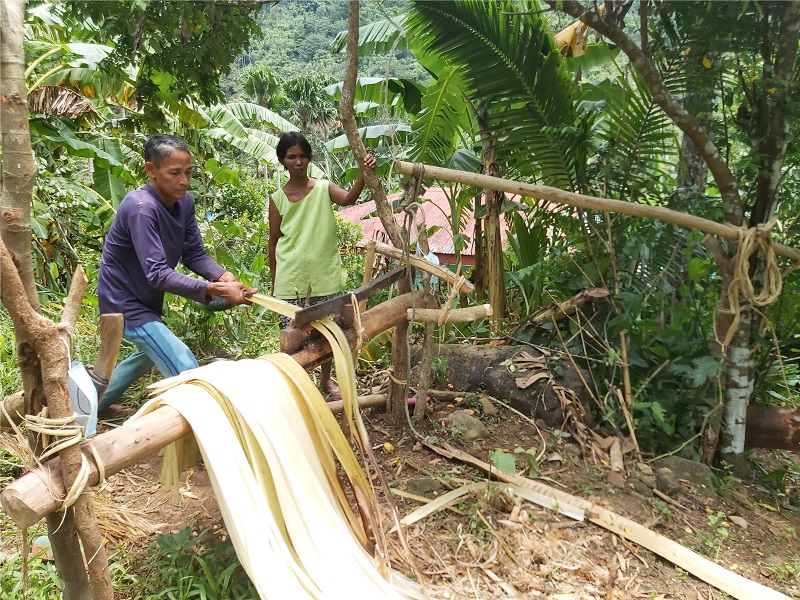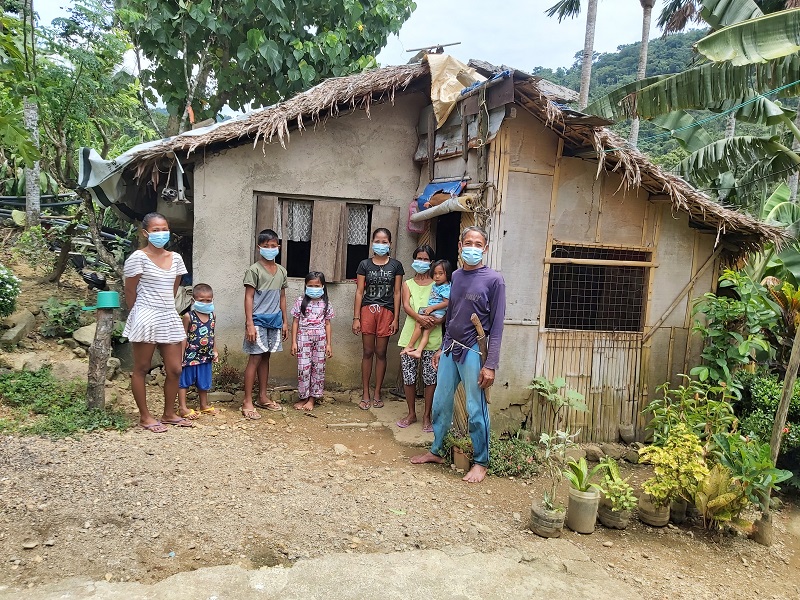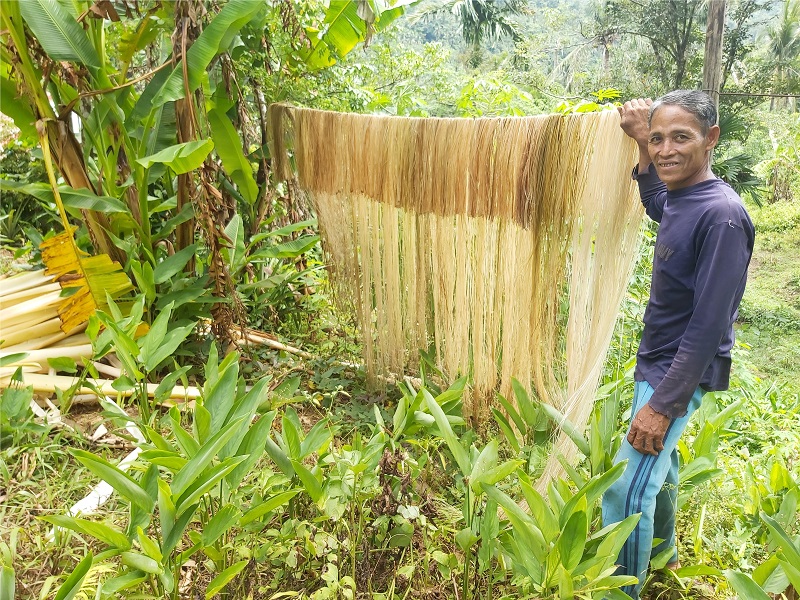Weaving with Hope
CATANDUANES — Nearly a year after Super Typhoon Rolly (International name Goni) barreled through the island of Catanduanes in the Bicol Region last November 2020, abaca (Manila hemp) farmers from the said province are gradually recovering from the effect of the devastating typhoon.

“We’re coping,” Alex, 56, says casually, looking at his children listening to the interview. “I am thankful that my children are all okay after series of calamities – typhoons and the pandemic.”
Alex has 15 children who work in various menial jobs like construction worker, farm laborer and housemaid in other places. The four young children — Sheryl, 18, Mabel 16, Alex Jr, 15, and Jake, 13 — are still in school.
“My eldest son, Arjae (32), helps me with my abaca work. He does what I do. But I don’t want all of my children to end up like me. I want them to finish school and have a better life,” Alex shares.
‘Not easy’
Alex has been an abaca farmer since he was 15. “I’ve been in this business for 41 years. I could say I’m an expert,” he jests. “It’s not easy to be an abaca farmer. We need to go up the mountain where the abaca plants are. It’s difficult but this this is the only job I know, so I have no other choice.”
The Philippines is known as the leading abaca producer in the world with Catanduanes comprising the bulk of the total production at 37%. Abaca came from a family of banana and is usually used as textile, sheets, in food packaging.
Abaca fiber is used also to make masks and PPEs. There are more than 13,000 abaca farmers in Catanduanes tending to over 33,000 hectares of farm. The huge contribution of Catanduanes in the abaca industry has made the province the Abaca Capital of the Philippines.
Although abaca is a valuable crop and a top dollar earner, abaca farmers in Catanduanes earn meagerly. He continues, “We harvest abaca once or twice a month and earned Php4,000 ($80) a week. Whenever a typhoon hits us, we lost a lot. Abaca trees could take 6 months to a year to grow.”
In 2020, series of typhoons and the COVID-19 pandemic affect the country’s abaca production. The Philippine Fiber Industries Development Authority (PhilFida) reported that the Philippines’ abaca output from January to August 2020 was down by 27%. Typhoon Rolly packed with a 220kph wind damaged 80% of the abaca farm in Catanduanes alone, the United Nations Philippines online site stated.
Whenever abaca work is low, Alex would look for an alternative job as farm laborer or construction worker. “If there’s work, we are paid Php350 a day,” he says. His wife, Lolita, tries to eke out a living by selling vegetables to the neighbor and earns Php200.00.
When both parents are out for work, Sheryl, the 12th child, became her younger sibling’s little teacher. “It’s not that difficult to teach nor study with module. But I still like going to school like we used to,” she says.

Starting anew
Coordinating with key government agencies from the start, child-focused and humanitarian organization World Vision in the Philippines assisted abaca farmers to recover through provision of farming tool kits used to harvest abaca plants.
“Abaca farmers are starting to harvest nowadays. We’ve provided 550 farmers with new tool kits to replace the old ones they’ve been using it for several years already. Some tools got rusty after they were left under to rain when families ran for shelter at the onslaught of typhoon Rolly. What most of them do is patched the old tools with cloths or with whatever they have so they can continue harvesting abaca,” Renato Salas, World Vision’s project staff, explains.
An abaca farmer would need Php1,500 ($3) to buy the cheapest materials for harvesting abaca plants.
World Vision provided the farmers with tools such as handstripping, stainless tuxy knife and rubber boots, among others, and hope that these tools will help them work faster and have a better income.
Receiving the tools, Alex gleams. “This is expensive!” he exclaims pertaining to the stainless hand stripping tool or ‘hag-ot’. “And this bolo (large knife) even has a holder. These items will last long.”

While the year 2020 was a challenging year for the abaca farmers, this 2021 provides a glimpse of hope. Between January to April, Catanduanes abaca production rose to 3.6 percent on a year-to-year comparison. PhilFida Executive Director Kennedy Costales explains that abaca farmers in Catanduanes are returning to normalcy. “Salvaging of the abaca stalks to produce fibers started in December last year and peaked by February this year. At present, the abaca farmers are now in their normal mode of harvesting,” Costales told the BusinessMirror
Last May 2021, the province held its abaca festival with virtual activities such as a dance showdown, agricultural forum, indigenous poem reading, and Festival Queen competition. The year’s theme is promoting Catanduanes as a “Happy Island” which leaves happy memories to every visitor after seeing the island’s scenic and unspoiled beauty. The theme also emphasizes the resilience of the Catandanguanons as they overcome challenges. “This year’s theme emphasizes our strength, our resilience,” Governor Cua says.
Alex believes likewise believes that the Catandangunanons will not give up and start anew — like an abaca plant.
Report and photos by Renato Salas | World Vision








